#mahayana
Explore tagged Tumblr posts
Photo

Pratisara Mantra, 927 CE, found near Luoyang, China
2K notes
·
View notes
Text
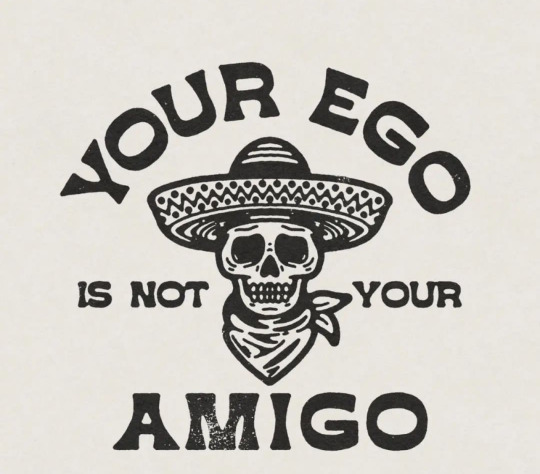
Know your enemy
685 notes
·
View notes
Text
upaya-kaushalya is one of my favorite pieces of buddhist thought. so much so that i find myself inherently following down the mahayana path (or as i like to call it, the vehicle of the masses) instead of the theravadin path because of it (aside from my own leftist inclinations of course).
essentially, upaya-kaushalya, or just really upaya when i'm talking abt it with fellow mahayana friends, is expedient means. upaya-kaushalya means "skillful mean" or "clever mean." when i've heard my lama talk about upaya it almost always means skillful means.
essentially, upaya emphasizes multiple roads to enlightenment. something is upaya if it is done out of ignorance but out of conscious effort to achieve enlightenment. this means you can have multiple different ways or ideologies for reaching enlightenment, and each of them have differing levels of efficacy, but they're all moving you toward enlightenment anyway.
my favorite part about this is that it acknowledges something that a lot of reformed/institutional religions don't really want to in fear of losing power through relinquishing of hegemony, which is context. this is why buddhism managed to flourish in southeast and east asia despite those regions being famously riddled with local faith and superstition because buddhism straight up was just layered on top of it and they didn't say whatever they were doing was wrong. they said that whatever they were doing were more means potentially leading to enlightenment anyway.
kinda like "we want you out of suffering, but we can only help you if you want to help yourself. you'll get out of it though." (though of course in mahayana everyone is working directly for the liberation of all sentient beings and not just themselves)
of course a caveat with upaya then is that it can lead to dangerous situations where anything can be justified as leading to enlightenment, even harmful practices. this can be counteracted through rigorous ethical rhetoric and debate (which buddhists are not strangers to!)
more importantly it can also be counteracted by saying that upaya can only really be done if you have bodhicitta, or otherwise you are doing it out of wisdom and compassion. i think that's a good enough qualifier to root out harmful practices, while still keeping mahayana super contextual!
mahayana is a really non-invasive faith when following the precepts (have the followers been able to keep it that way? well, they're still in samsara and not in dharmakaya...)
20 notes
·
View notes
Text
The Realm of the Bodhisattvas and Emptiness

The realm of the bodhisattvas is located in the higher regions of the spiritual universe. Unlike the realm of the deities, the realm of the bodhisattvas has very clear and pure energies. The same energy could make a person a thousand times more alive. It is also full of joy, celebration, wisdom, and compassion.
Bodhisattvas in Mahayana Buddhism are believed to be entities who delayed Nirvana to help those who needed help. Each bodhisattva is unique and has specific goals. Some bodhisattvas focus on helping non-human entities in higher dimensions, while others incarnate physically in the human realm.
The realm of the bodhisattvas is vast, and each region has a lesson to share, even from the smallest plant to the largest landscapes. It may seem strange to many people, but you do not have to go to the bodhisattva realm to experience the same thing. We can learn from nature, for example, as physical human beings.
The bodhisattvas have radiant and pure energy, much different from that of a deity. They also have very light and airy bodies, but they can change their form, although they have an original form that represents their qualities. But even their original form is changing.
Bodhisattvas also have an interesting aspect, which turned out to be connected to emptiness. This is also written in the Heart Sutra. In the essence of wisdom, there is emptiness. It can be challenging to understand but it is also somewhat paradoxical to some extent. But the ultimate reality is indeed emptiness, and within this emptiness, everything is possible and has full potential.
Once, a bodhisattva came to me and shared an important message to purify one’s energy. The bodhisattva said to always speak the truth, but humbly; to do good things, but not expect anything in return, and to be generous, but not take it to extremes. To do positive actions, one must do it wholeheartedly, aligning the mind with the wisdom of goodness, regardless of who you are helping. But use discernment, a highly valuable trait, to know whether the act of helping would be beneficial to a situation and to know the right person, place, time, and which action to take.
After connecting with the bodhisattvas, one can experience a sense of bliss, peace, and complete contentment. The bodhisattvas are already satisfied, for they do not form any attachments to anything they do. They are compassionate, but they also recognize the role of karma in everyone’s lives. They are wise, but they do not adhere to limiting belief systems. If human beings learn the power of emptiness, they can easily reach their goals, understand their desires, and eventually reach a higher consciousness.
Disclaimer: The views presented in this article are based on a hermetic perspective and may vary from traditional Buddhist beliefs.
#spirituality#spiritual knowledge#occult#spiritualguidance#hermeticism#bodhisattva#buddhism#mahayana
61 notes
·
View notes
Text
A psicoterapia é fundamental para quebrar todos os tipos de ciclos mentais que levam ao sofrimento por repetição.

Não é mais necessário se tornar um monge budista e passar anos a fio imerso em praticas meditativas, basta fazer uma boa psicoterapia.

Ciclos mentais fazem com que pessoas fiquem presas a magoas, lembranças e qualquer tipo de ancora que leva a uma cascata de manifestações psicossomáticas, que são as principais causadoras do famoso sofrimento humano tão estudado pelo príncipe Siddhata Gautama o Buda.

Livre-se das âncoras através das psicoterapias.

#psicoterapia#cérebro#mente#psicanálise#terapia#psicossomáticas#meditation#meditação#mindfulness#buda#tao#budismo#taoísmo#hinduismo#yoga#patanjali#paramahamsayogananda#hatthayoga#zen#vajrayana#mahayana#hinayana#theravada#krishna#shivha#babaji
82 notes
·
View notes
Text


Updated my shrines a little.
#hellenic polytheism#hellenic pagan#polytheism#buddhism#buddhist polytheism#mahayana#budai#guan yin#nagaraja#aphrodite deity#artemis deity#hera deity#apollo deity#persephone deity#hades deity#zeus deity#fortuna deity
11 notes
·
View notes
Text
#tumblr polls#tumblr poll#Random polls#Religion#Religion poll#Polls#judaism#jewblr#Jewish#atheism#atheist#agnostic#non religious#Christian#Christianity#catholic#protestant#islam#Muslim#islamic#Hindu#hinduism#hindublr#islamblr#christianblr#buddhism#buddhist#theravada#mahayana#Sikhism
51 notes
·
View notes
Text

I'm trying to draw more on a daily base (let's see how well I'll manage that) and ALSO give all my characters that are faceless currently some designs!
So here is one of the ancient (as in, ancient era) NPCs from my LoZ Campaign!
Don’t use or repost my art without permission.
48 notes
·
View notes
Text

- Baozhi with an internal Avalokitesvara Bodhisattva emerging as he reaches enlightenment, Heian Period (from 794 to 1185). - Paprika, Satoshi Kon, 2006.
#baozhi#avalokitesvara#bodhisattva#enlightenment#unvolk#paprika#satoshikon#heianperiod#monk#buddhism#japan#mahayana#mahayanabuddhism#mystery#transformation
23 notes
·
View notes
Text
The Buddha in different religions/beliefs.
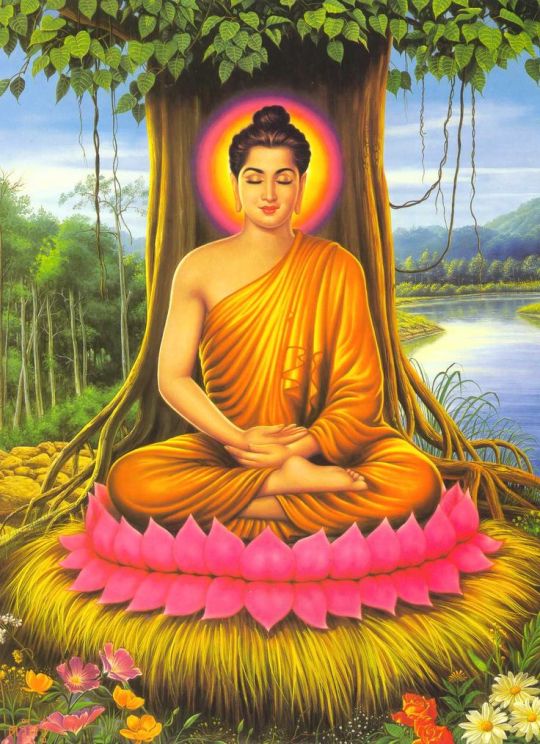
Firstly, who is the Buddha?:
The historical Buddha was a prince named Siddhartha Gautama who lived 2500 years ago in what is today northern India/Nepal. He was born into a warrior clan known as the Shakya, which is why he is often called Shakyamuni, “Sage of the Shakyas.” He is the one to later abandon worldly attachments, become enlightened, and found Buddhism.
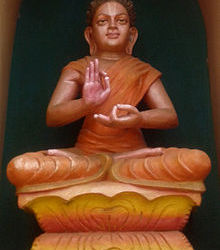
The Buddha in Hinduism.
Some Hindus consider the Buddha as the 9th avatar of Vishnu/Dashavatara, The Buddha was integrated into Vaishnavism, it was also believed the Buddha’s wife, Yasodhara, was the avatar of the wealth Goddess Lakshmi, though Buddhists deny this, so as other Hindus who identify the 9th avatar of Vishnu to another being who was also called “buddha”.
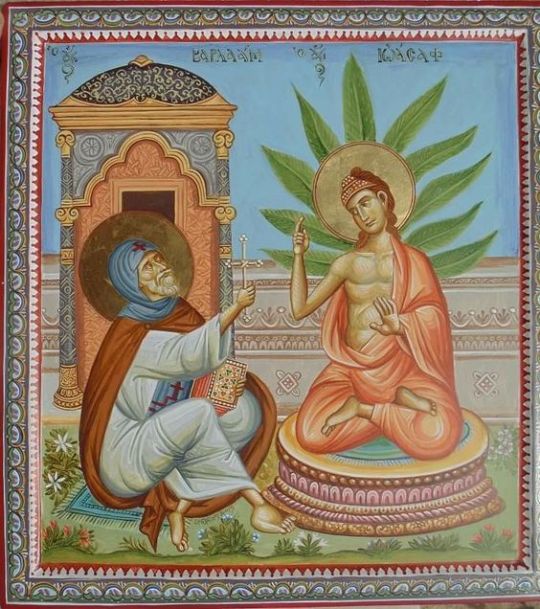
The Buddha in Christianity.
Called St. Josaphat (Budhasaf) of India, The story of St. Josaphat tells of a prince in India who is converted to Christianity by a monk, despite his father's attempts to prevent it. The monk and prince are later honored as saints in Christendom. The Buddha was honored as a Christian saint for about a thousand years, but this wasn't recognized until the mid 19th century.
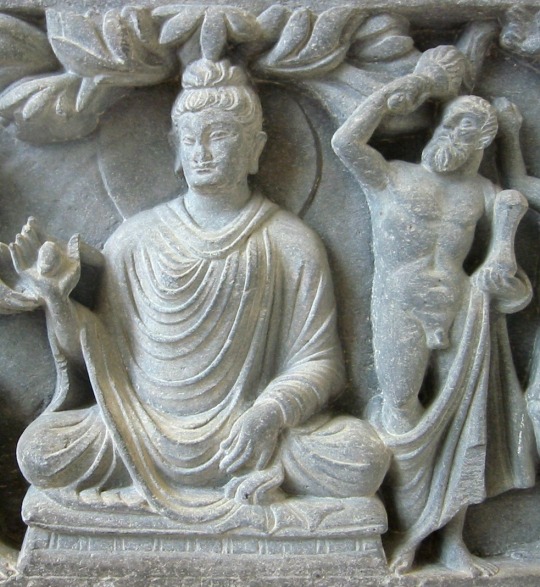
The Buddha in Hellenism.
Buddhism had a big influence on ancient Greeks, in which they would identify Buddhist beings with Greek beings, the Greeks were also the first ones to make Buddhist statues. Heracules (or Zeus) was identified with The bodhisattva Vajrapani, whom was seen as Buddha’s protector. There also was a Syncretism between The Buddhist Goddess Hariti & Greek goddess tykhe.

The Buddha in Taoism.
Some Taoist believe that the Buddha was a reincarnation of Laozi, the founder of Taoism. Some also believe he was either on the same power-level as the Jade emperor, the Taoist king of heaven, or stronger than him. 'Buddha' is absorbed wholly into the Taoist cosmology, becoming another term used to describe the generative tissue at the source of all things in both the mental and physical realms.
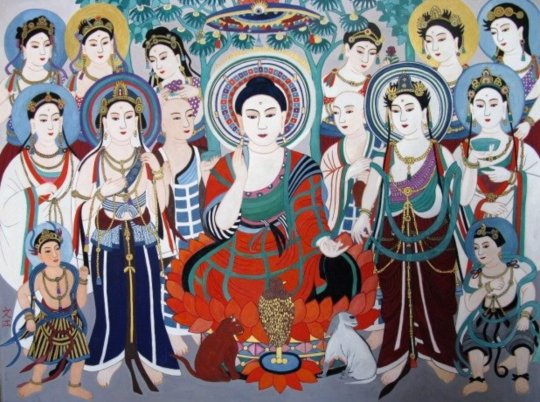
The Buddha in Shinto.
Buddhism & Shinto are mostly seen highly entwined in Japan. The buddha is called Shaka in Japanese & was transformed into a powerful Japanese deity, whom coexisted with the Shinto gods. Buddhist temples were often attached to Shinto shrines. A Shinto temple would sometimes have a priest of that shrine read a Buddhist sutra in which Shinto events took place.
#buddhism#buddha#buddhist art#hinduism#christianity#hellenism#Taoism#daoism#shinto#shintoism#religions#the buddha#Siddhartha#gautama#siddhartha gautama#shakyamuni buddha#shakyamuni#desiblr#lotus-list#buddhistwitch#desi#desi tag#mahayana#vajrayana#theravada#zen
36 notes
·
View notes
Text

The Four Encompassing Vows Masses of creatures, without bounds, I vow to save. Anxiety and hate, delusive desires inexhaustible, I vow to break. Dharma gates beyond measure, I vow to learn. Buddha’s Way, unsurpassable, I vow to accomplish.
#bodhisattva#buddhism#mahayana#buddha#dharma#salvation#eschatology#teleology#nirvana#four noble truths#chinese#kanji#seal script
92 notes
·
View notes
Text

The Secret of a Full Life
The secret of a full life is to live and relate to others as if they might not be there tomorrow, as if you might not be there tomorrow. It eliminates the vice of procrastination, the sin of postponement, failed communications, failed communions. This thought has made me more and more attentive to all encounters. meetings, introductions, which might contain the seed of depth that might be carelessly overlooked. This feeling has become a rarity, and rarer every day now that we have reached a hastier and more superficial rhythm, now that we believe we are in touch with a greater amount of people, more people, more countries. This is the illusion which might cheat us of being in touch deeply with the one breathing next to us.
The dangerous time when mechanical voices, radios, telephones, take the place of human intimacies, and the concept of being in touch with millions brings a greater and greater poverty in intimacy and human vision.
~ Anais Nin
The Diary of Anaïs Nin
#buddha#buddhist#buddhism#dharma#sangha#mahayana#zen#milarepa#tibetan buddhism#thich nhat hanh#enlightenment spiritualawakening reincarnation tibetan siddhi yoga naga buddha#amitaba buddha#pure land#anais nin
367 notes
·
View notes
Text
one thing i really like about buddhism--particularly mahayana buddhism--is that it understands context, so in my mind it's a very "human" religion. mahayana doesn't tell you to live up to impossible standards but rather, to actually attain what was once thought impossible through whatever means you have. by any means necessary is very applicable to mahayana buddhism.
in the lotus sutra, the buddha states something along the lines of "if a person needs an arhat to be saved, i will appear in the form of an arhat" and proceeds to list down several other forms they might take to save someone, right down to "if they need a common person to be saved, then i will appear in the form of a common person." now, buddhism has been soteriological from the start (it's all about emancipation from the wheel of rebirth after all) but that sutra passage only really served to highlight the major message of the entire sutra: the use of skillful means.
so to me this means buddhism accepts contexts. it doesn't require you to do 180,000 prostrations, it doesn't require you to be a perfect peerless meditative god, it doesn't require you anything that you cannot do at all. it doesn't matter: you will become a buddha all the same. that last bit makes it even better: since in buddhism emancipation means becoming a buddha, when sakyamuni "saves" you he only really supercharges your enlightenment so you can get to it easier, or if another buddha saves you (like amitabha) he whisks you off to his pure land sukhavati so that you can focus a thousand kalpas on just enlightenment without having to be hungry, thirsty, or oppressed.
the majority buddhism in my country is mahayana--it used to be some form of esoteric buddhism during the classical period but that has long since vanished away. though the fact that there has been avalokitesvara images found somewhere in batangas makes it a very spiritual thought to become a buddhist in a country that has partial buddhist roots.
it's mahayana because the buddhism that was brought back here during/after colonization was chinese buddhism. which is dominated by amitabha/pure land buddhism. now one of the most important deities/bodhisattvas in chinese buddhism is guanyin 觀音 (bodhisattva of compassion, who is a strange sinicized version of avalokitesvara). you'll still find her statues in the philippines, especially in parts most concentrated with chinese immmigrants. in one corner of binondo you will see a street shrine with guanyin, mother mary, and jesus christ beside each other, and with passersby offering incense to all three of them.
so since guanyin (who, by the way, is sometimes syncretized to essentially be "chinese mama mary" because religion in religious countries is very bumfuck evades taxonomy) is the most popular bodhisattva in the PH, when tibetan lamas arrived here to teach vajrayana, they adapted a lot of chenrezig rituals even though chenrezig isn't really overtly huge in tibetan buddhism. so now when you go to vajrayana pujas in manila, they almost always have some semblance of chenrezig invocation, and its common to have chenrezig pujas.
another upaya-kaushalya thing i noticed is that buddhism doesn't really do like mass every sunday. but since filipinos have been doing sunday mass for around 300 years now they adapted and now we have sunday pujas because the common filipino expects some sort of religious commitment on sunday
i think buddhism could be a huge boon to socialist movements. cutting through the ego, emphasis on emptiness (that is, nothing has inherent nature, which is essentially mystical materialism), and an emphasis on a sort of helping each other to gain merit would really benefit everyone. especially since unlike christianity they don't force other local religions or local people to change for them, but rather, they retrofit themselves into the local space, adopting the principle of skillful means to help everyone realize their buddhahood.
138 notes
·
View notes
Text


Homage to you, supremely joyous,
Your splendorous crown spreading garlands of light.
Tuttārā, smiling and laughing,
You bring demons and worlds within your control.
Homage to you, whose two eyes shine brightly
Like the sun and the moon when it’s full.
Tuttārā, with twice-uttered hara,
You pacify the most intractable ills.
19 notes
·
View notes
Text
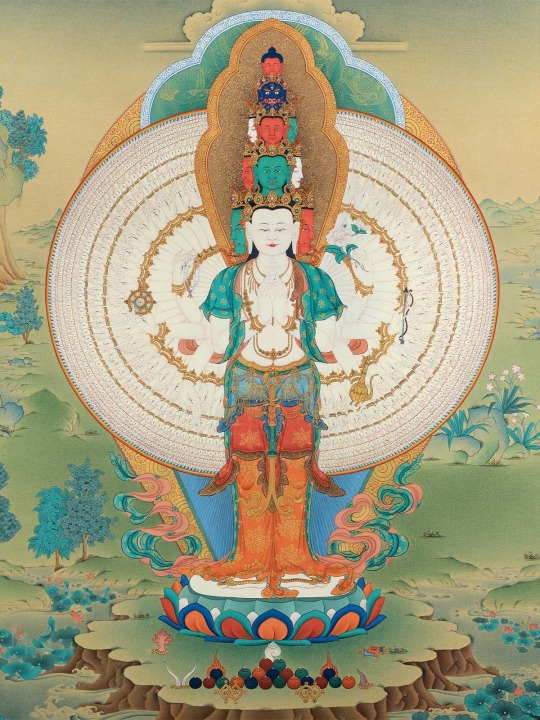
“When the holy Bodhisattva Avalokitesvara had truly grasped the transcendent wisdom, he realized that visible form is only illusion. The same applies to its perception, to its names and categories, to discriminative intellect and finally even to our consciousness. They are all illusion. With this realizaton he was beyond all sorrow and bitterness.
Disciple Sariputra! The material is not different from the immaterial. The immaterial and the material are in fact one and the same thing. The same applies to perception, concepts, discriminative thinking and consciousness. They are neither existing nor not existing.
Sariputra! All things therefore they are in themselves not good and not bad, they are not increasing and not decreasing.
Therefore one may say there are no such things as form, perception, concepts, thinking process, and consciousness. Our senses such as eye, ear, nose, tongue, body and mind are misleading us to illusion; thus one may also say there is no reality in visible form, sound, smell, taste, touch and mindknowledge. There are also no such things as the realms of sense from sight up to mind, and no such things as the links of existence from ignorance and its end to old age and death and their end. Also the caturāryasatyāni are nonexistent, just as there is no such thing as wisdom and also no gain.
Because the holy Bodhisattva who relies on transcendent wisdom knows that there is no gain, he has no worries and also no fear. Beyond all illusion he has reached the space of highest Nirvana.
All Buddhas of the past, present and future, found highest perfect knowedge because they relied on transcendental wisdom.
Therefore we ought to know that the great verse of the transcendent wisdom is unsurpassed in its splendor, and that it appeases truly all pain. It reads:
GATE, GATE, PARAGATE, PARASAMGATE BODHISVAHA!”
-The Heart Sutra.
#buddhism#buddhist#books#history#literature#religion#theology#mysticism#esotericism#religious#philosophy#sutra#eastern philosophy#mahayana#Mahayana Buddhism#dharma#Dharmic#India#china#Thangka#buddhist art#art#asian art#aesthetic#religious quotes#religious aesthetic#tradition#traditionalism#traditional art
54 notes
·
View notes
Text
The diversity of Buddhism is fascinating. All the way from “there are no gods, there are no miracles, there’s no such thing as an immortal soul, karma and reincarnation are just metaphors,”
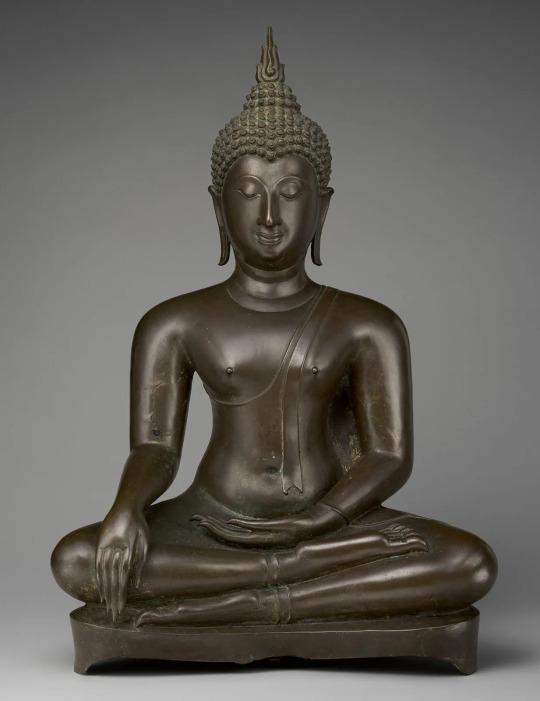
to “Siddhartha Gautama the Buddha was one human incarnation of the omnipotent multiversal being Mahāvairocana who came to give supernatural powers to his Enlightened followers, one of whom, Amitābha, made a Pure Land where you can go after you die if you call upon his name.”
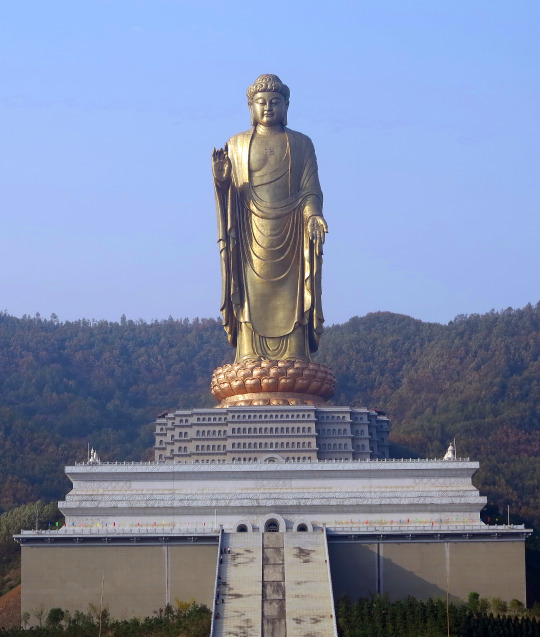
Granted you could also kind of say the same thing about Christianity, but that’s always been a lot more self-policing of deviance, after all if you think there’s only one truth you want to nail down what exactly it is. Groups like Gnostics or Unitarian Universalists have always been marginalized, with the possible exception of the Mormons, who were isolated enough to actually build up some population.
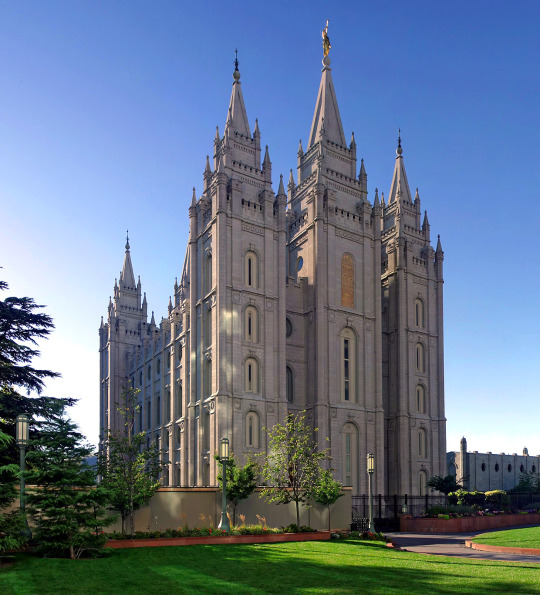
#religion#atheism#buddhism#theravada#mahayana#tibetan buddhism#zen buddhism#pure land buddhism#latter day saints
32 notes
·
View notes